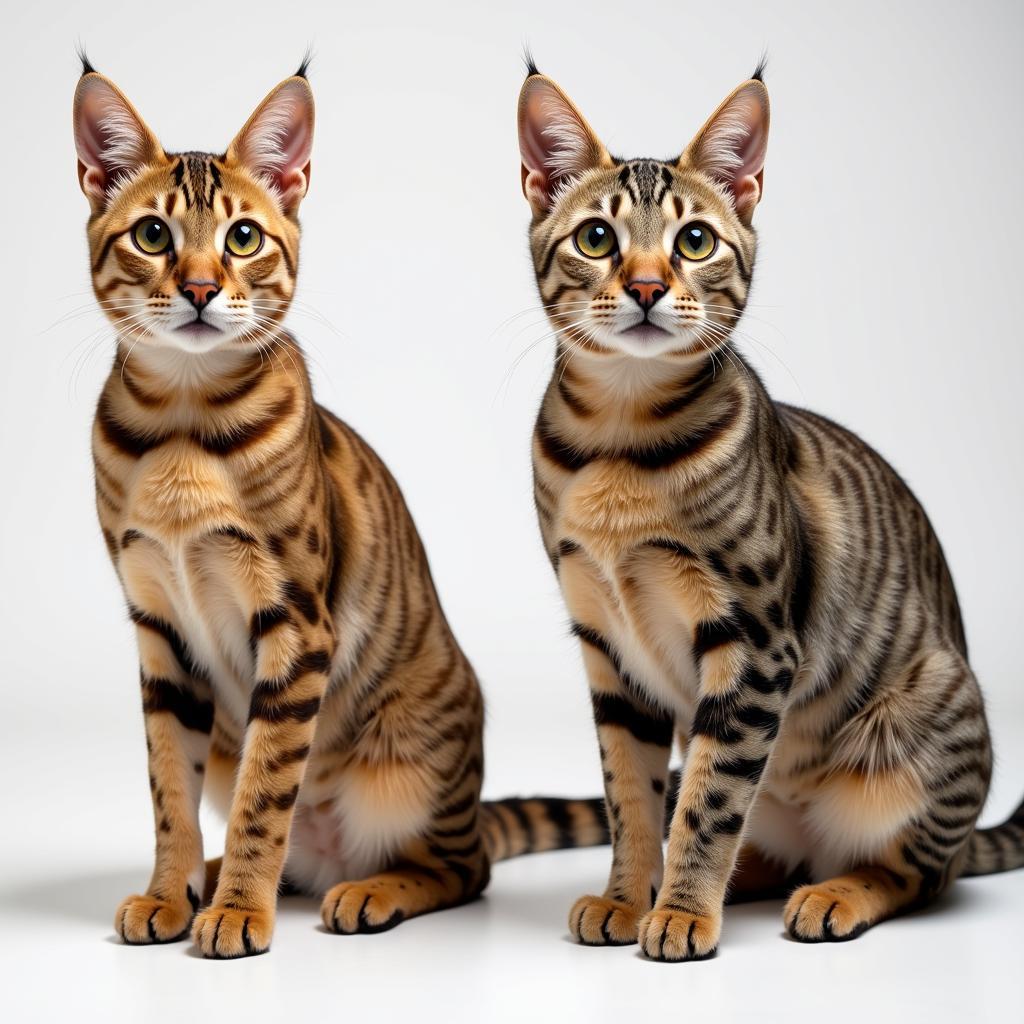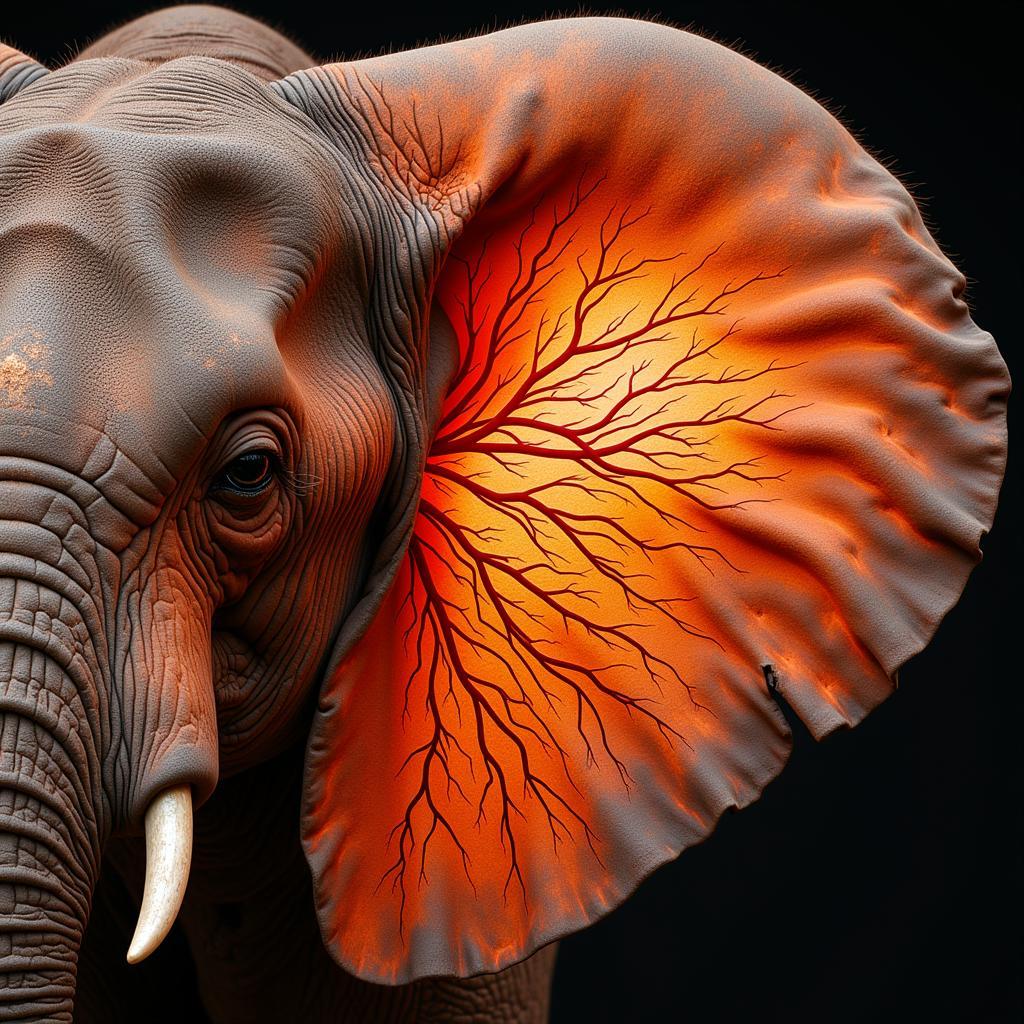Unveiling the Ancestry of African Cats: Exploring Domestic Cat Breeds
The captivating world of African Cats Domestic Cat Breed reveals a rich tapestry of history, evolution, and feline charm. From the sandy dunes of the Sahara to the lush forests of the Congo Basin, Africa has cradled the ancestors of many of our beloved domestic companions. This journey into the heart of feline ancestry will explore the fascinating links between wild African cats and the domestic breeds we cherish today.  Comparison between African Wildcat and Domestic Cat
Comparison between African Wildcat and Domestic Cat
Tracing the Lineage: From African Wildcat to House Cat
The story of the african cats domestic cat breed begins with the African Wildcat (Felis silvestris lybica). This small, sandy-colored feline, native to North Africa and the Near East, is widely considered the primary ancestor of our domestic cats. Archaeological evidence suggests that the domestication process began thousands of years ago, likely in the Fertile Crescent region, where humans first transitioned to settled agricultural societies. The African Wildcat, drawn to rodent populations thriving around grain stores, formed a symbiotic relationship with humans, eventually leading to domestication. african house cat breeds
The Journey of Domestication: A Tale of Mutual Benefit
The transition from wildcat to house cat was a gradual process, driven by natural selection and human influence. Cats with more docile temperaments and a tolerance for human presence were more likely to thrive in human settlements. Over generations, these traits became more pronounced, leading to the development of the diverse array of domestic cat breeds we know today.
African Influence on Modern Breeds: A Legacy in Stripes and Spots
While not all domestic cat breeds have direct lineage to the African Wildcat, the influence of African felines is evident in several breeds. The Abyssinian, with its distinctive ticked coat, is believed to have originated in Ethiopia, although its precise ancestry is still debated. The Egyptian Mau, known for its striking spotted coat, bears a strong resemblance to the ancient cats depicted in Egyptian art.
 Egyptian Mau with its distinctive spotted coat
Egyptian Mau with its distinctive spotted coat
Exploring the Genetic Connections: Unraveling the Feline Family Tree
Modern genetic studies have shed light on the complex relationships between wild and domestic cats. These studies have confirmed the close genetic link between the African Wildcat and most domestic cat breeds, further solidifying its position as the primary ancestor. african forest cat felis silvestris lybica
Beyond the Domestic Sphere: Wild Cats of Africa
While the focus of this exploration is on the domestic cat’s African heritage, it’s important to acknowledge the incredible diversity of wild cats that still roam the African continent. From the majestic lion and elusive leopard to the smaller serval and caracal, these magnificent creatures play vital roles in their ecosystems. african cape hunting dog
“Understanding the ancestry of our domestic cats helps us appreciate the incredible journey of evolution and the enduring bond between humans and animals,” says Dr. Anika Malima, a renowned feline geneticist based in Dar es Salaam.
Conservation Efforts: Protecting Africa’s Feline Heritage
Protecting these wild cats and their habitats is crucial for preserving Africa’s rich biodiversity. Numerous organizations are working tirelessly to combat poaching, habitat loss, and other threats facing these magnificent creatures.
What are the key characteristics of the African Wildcat?
The African Wildcat is typically small and sandy-colored, with distinctive black stripes on its tail. Its size and coat provide excellent camouflage in its native desert and savanna habitats.
How did the domestication of cats begin?
The domestication of cats is believed to have begun in the Fertile Crescent, where the African Wildcat was attracted to rodent populations around human settlements.
african cheetah chasing african golden cat cats africa
In conclusion, the story of the african cats domestic cat breed is a testament to the enduring power of adaptation and the complex relationship between humans and animals. From the wild landscapes of Africa to our homes and hearts, the legacy of these remarkable felines continues to captivate and inspire.
“By understanding the origins of our domestic cats, we gain a deeper appreciation for the wild cats that still roam the African continent and the importance of their conservation,” adds Dr. Zuberi Kitoto, a wildlife conservationist working in Tanzania.
When you need assistance, please contact us by Phone: +255768904061, Email: kaka.mag@gmail.com Or visit us at: Mbarali DC Mawindi, Kangaga, Tanzania. We have a 24/7 customer service team.


